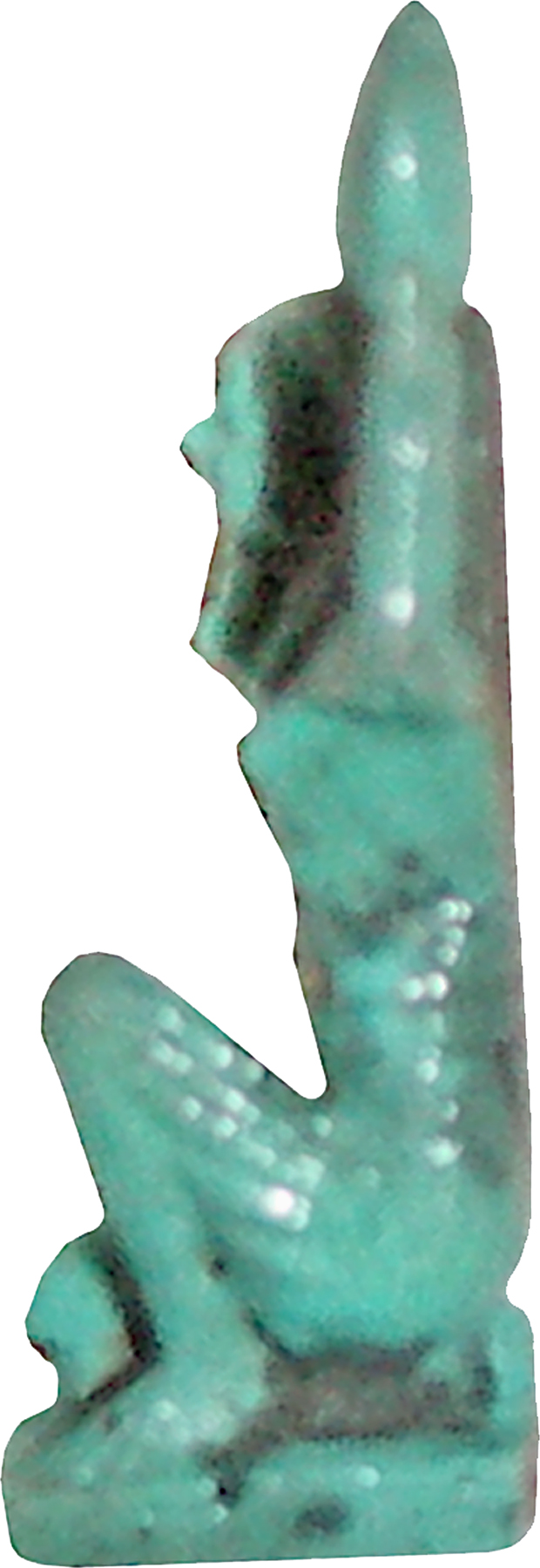Shu
(Ancient Egypt and Nubia )
Shu, the son of the creator and sun god in the Heliopolitan creation myth, represents the principle of air. Together with his consort, Tefnut- the principle of moisture, as well as Geb (earth) and Nut (sky), he was one of the first deities. Shu was responsible for separating Geb and Nut and securing the space of the universe; therefore he also represented the life principle.
Amulets of Shu became popular in the Late Period. This amulet represents Shu in his standardized form. He is kneeling on his right knee with his left knee drawn up. Both arms are raised (to lift up the sky), and he wears a long wig and a pleated kilt.
Provenance
Provenance (from the French provenir, 'to come from/forth') is the chronology of the ownership, custody, or location of a historical object. Learn more about provenance at the Walters.
Henry Walters, Baltimore [date and mode of acquisition unknown]; Walters Art Museum, 1931, by bequest.
Conservation
| Date | Description | Narrative |
|---|---|---|
| 7/23/1959 | Treatment | cleaned |
| 4/20/1977 | Treatment | cleaned |
| 7/30/1998 | Examination | examined for condition |
Geographies
Egypt (Place of Origin)
Measurements
H: 1 1/4 x W: 11/16 x D: 9/16 in. (3.2 x 1.75 x 1.5 cm)
Credit Line
Acquired by Henry Walters, by 1931
Location in Museum
Accession Number
In libraries, galleries, museums, and archives, an accession number is a unique identifier assigned to each object in the collection.
In libraries, galleries, museums, and archives, an accession number is a unique identifier assigned to each object in the collection.
48.1683










